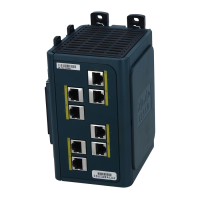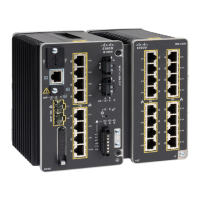794
Configuring Embedded Event Manager
Configuring Embedded Event Manager
EXAMPLE
The following example shows how to configure an EEM applet that runs when there is an exact match on the value of a
specified SNMP object ID that represents the amount of current process memory.
Switch(config-applet)# event snmp oid 1.3.6.1.4.1.9.9.48.1.1.1.6.1 get-type exact entry-op lt entry-val
5120000 poll-interval 10
These examples show actions that are taken in response to an EEM event:
Switch(config-applet)# action 1.0 syslog priority critical msg "Memory exhausted; current available
memory is $_snmp_oid_val bytes"
Switch (config-applet)# action 2.0 force-switchover
Registering and Defining an Embedded Event Manager TCL Script
BEFORE YOU BEGIN
Review the Information About Embedded Event Manager, page 789.
Command Purpose
1. configure terminal Enter global configuration mode.
2. event manager applet
applet-name
Register the applet with EEM and enter applet configuration
mode.
3. event snmp oid oid-value
get-type {exact | next} entry-op
{gt | ge | eq | ne | lt | le} entry-val
entry-val [exit-comb {or |and}]
[exit-op {gt | ge | eq | ne | lt | le}]
[exit-val exit-val] [exit-time
exit-time-val] poll-interval
poll-int-val
Specify the event criteria that causes the EEM applet to run.
(Optional) Exit criteria. If exit criteria are not specified, event
monitoring is re-enabled immediately.
4. action label syslog [priority
priority-level] msg msg-text
Specify the action when an EEM applet is triggered. Repeat this
action to add other CLI commands to the applet.
(Optional) The priority keyword specifies the priority level of
the syslog messages. If selected, you need to define the
priority-level argument.
For msg-text,
the argument can be character text, an
environment variable, or a combination of the two.
5. end Exit applet configuration mode and return to privileged EXEC
mode
.

